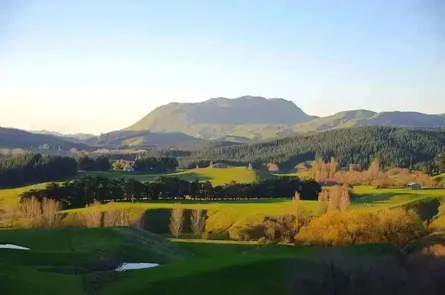
The Importance of Farm-Scale Mapping
Why High-Resolution Mapping Is Worth the Investment for Farmers
Balancing production demands with environmental responsibilities is a common challenge for farmers. Investing in detailed farm mapping might seem like an unnecessary expense, but it can significantly enhance both your productivity and sustainability.
Gain a Deeper Understanding of Your Land
Standard regional maps provide a general overview but miss the unique features of your farm. High-resolution mapping offers detailed insights into every slope, soil type, and paddock. This precise information helps you make informed decisions tailored to the specific needs of different areas on your farm.
It’s Like Building a House with Subdivision Plans
Imagine trying to build a house using only a city map—you’d miss crucial details like property boundaries, utility lines, and terrain features. Instead, you need detailed subdivision plans to guide your construction accurately. Similarly, high-resolution farm mapping provides the detailed “blueprints” necessary for effective farm management.
Tailor Your Management Practices
Variations within your paddocks—such as different soil types or erosion levels—require specific management approaches. Detailed maps allow you to:
- Optimise Input Use: Apply fertilisers and water more efficiently, reducing waste and lowering costs.
- Enhance Crop Selection: Choose the best crops for each soil type to maximise yields.
- Prevent Environmental Damage: Implement measures to reduce soil erosion and nutrient runoff.
Select the Right Mapping Scale
The scale of your map should match the smallest areas you manage. For example:
- 1:500 scale: Ideal for horticulture, focusing on areas as small as 10 square meters.
- 1:5,000 to 1:10,000 scale: Suitable for arable farming or intensive pastoral activities, managing areas between 0.1 to 0.4 hectares.
- 1:15,000 scale: Best for broader pastoral lands, where the smallest area of interest is around 1 hectare.
To clarify, a map scale of 1:10,000 means that 1 centimeter on the map represents 10,000 centimeters (or 100 meters) on the ground. So, 1 cm : 100 m is the same as a 1:10,000 scale. This scale is useful for detailed farm planning, capturing important features that might be overlooked in larger-scale maps.
Boost Productivity and Sustainability
Investing in high-resolution mapping is not just about gathering data—it’s about leveraging that information to improve your farm’s performance. Benefits include:
- Increased Efficiency: Better resource management leads to cost savings.
- Higher Yields: Tailored practices result in improved crop performance.
- Environmental Stewardship: Protecting the land ensures long-term viability and compliance with regulations.
An Investment with Lasting Returns
While the initial time and cost of detailed mapping may seem high, the long-term advantages can far outweigh these expenses. Improved efficiency, enhanced production, and reduced environmental impact contribute to a more profitable and sustainable farming operation.
Conclusion
For farmers aiming to optimise production while caring for the environment, high-resolution mapping is a valuable tool. It provides the detailed insights needed to make smarter decisions, ensuring your farm remains productive and sustainable for years to come.



